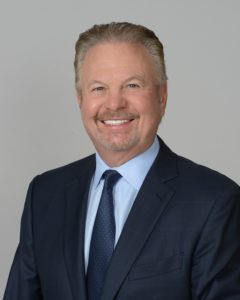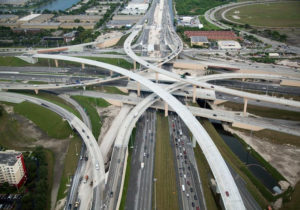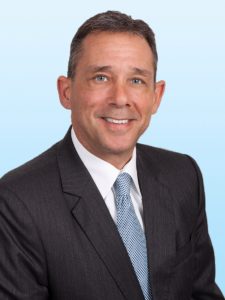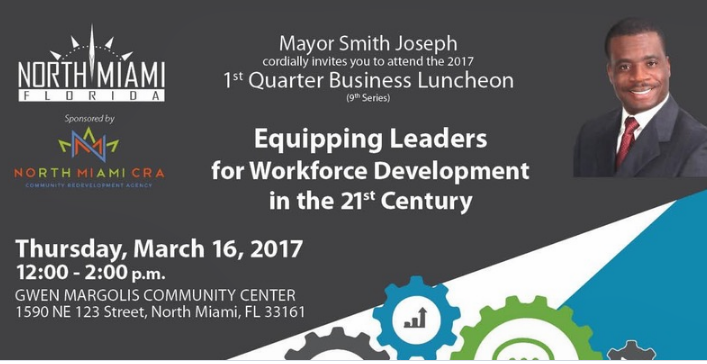When: Thu, March 16, 2017 12:00 PM – 2:00 PM EDT
Where: Senator Gwen Margolis Community Center, 1590 Northeast 123rd Street, North Miami, FL 33161
Equipping Leaders for Workforce Development in the 21st Century
Join The City of North Miami’s Mayor, Dr. Smith Joseph, for the 2017 1st Quarter Business Luncheon titled Equipping Leaders for Workforce Development in the 21st Century featuring Keynote Speaker Jeff Bridges, Chairman of CareerSource South Florida. Learn how local companies are redefining what it means to have a skilled and innovative workforce in the 21st century job market.
How Miami-Dade’s unique characteristics are creating an optimistic investment environment
Gerald Greenspoon Co-Managing Director – Greenspoon Marder
 How do you assess the business climate for Miami?
How do you assess the business climate for Miami?
We are quite optimistic and very positive about the continued growth of Miami’s economy. The real estate sector has been strong for several years, for both residential and commercial development. However, some of the high-end residential development could possibly be overbuilt, which could create a market correction and an opportunity for investors. In addition, we have seen strong commercial development, which is exciting to see because it generates additional growth, attracting businesses and creating jobs. This means there are new people joining the market looking for residential housing opportunities. The commercial and residential markets go hand in hand. We feel that the new administration is going to create more opportunity. Less regulation on the business world will create a more attractive business environment. We see Miami continuing to be one of the fastest growing regions of the U.S.
What is the current demand for legal services coming from international investors into Miami?
Miami is an attractive location and a hub for foreign investment. Whenever we think foreign investment is slowing down, another part of the world becomes interested. We continue to have strong investment and trade ties with South America and Central America. It all starts at PortMiami. The expansion of the Panama Canal created incredible opportunities in Miami, South Florida and the State of Florida. In addition to that, the reach has become even broader over the years. The European influx of interest and investors in real estate and business has taken of and continues. We are also seeing the same from parts of Asia. We have a tremendous transportation hub in South Florida and Miami that makes it extremely attractive and simplifies the access into our region.
What are some of the main challenges for Miami as an investment destination?
As with any major city with people visiting, we should watch out for the increase in the cost of living. The price of condominiums and residential property in prime areas has increased dramatically. Miami recovered very quickly from a major real estate recession in 2008 to 2009, and has now achieved the highest prices that we’ve ever seen. That is always problematic. In addition, we always want our political atmosphere in the region to be welcoming. We have to promote and fund the infrastructure that is required in order to handle the large increase in population and investment. This includes transportation and mass transit. These are all critical issues.
I come from Miami, so I want to make a difference in this area. I have friends and family who have fallen on hard times, either through bad luck or poor decisions, and they deserve support. When I first became successful, I tried to help by just giving out money. However, after a while, I realized this only helped so far and did not help people fully reach their potential. I wanted to find a way that I could have a positive impact on people’s lives without simply handing out money, which is why I started buying franchises. Licensing is a way of bringing more job opportunities to the city. Once people have real employment opportunities, you can see how invested they become in trying to improve their own situations. I refuse to invest money or time into something just to make money. I have to be passionate about it because I want to be involved. My career trajectory has been interesting. I had a great career in college basketball, but I started my professional career in Europe. While I was there, I dedicated myself to self-improvement, learning what it takes to become a real professional. Instead of blaming the NBA for making a mistake and not drafting me straight away, I asked myself “What can I do? How can I better myself? How can I put myself in a good situation to be successful?” Now I want to use what I have learned to help the Miami community. You can’t think about Miami without thinking about the Miami HEAT. There are the different cultures, great foods and excitement in this city, and the HEAT embraces all of that. However, there is also Overtown and the inner city life, which also need consideration. Since I have been a part of the HEAT organization, we have done a tremendous job of impacting the entire city. The HEAT has always been great in the community, and they have supported my children’s foundation as well as the City of Miami. We were a football town when I was growing up, and to be part of this team’s evolution, to contribute to our first, second and third championships, to have the opportunity to be coached by the great Pat Riley and have the Arison family be my bosses has been a dream come true.

When: March 9-11 2017
Where: InterContential Hotel Miami
Sample Topics:
Executive Education Session – Global Impact of Tech Disruption and Immigration
Fireside Chat: Addressing the Skills Gap in the U.S. Labor Market and the Role of Higher Education

Key South Florida Leaders Driving Entrepreneurial and Business Success
This half day forum will provide insights into key business leaders instrumental in shaping the business and entrepreneurial landscape in South Florida. The discussions will include commentary from successful women executives from diverse sectors along with an entrepreneurial panel sharing their personal journeys of business building. Also, key note thoughts from global executives and business networking will round out the program.
For more information click here
Invest: Miami speaks with the Miami-Dade Expressway Authority
With five projects being executed and seven others in the pipeline, the Miami-Dade Expressway Authority (MDX) is rapidly enhancing Miami’s road infrastructure. MDX, the entity that manages, maintains and funds improvements to five local expressways, and is funded only by tolls collected on the Dolphin SR 836, Gratigny SR 924, Airport Expressway SR 112, Don Shula/SR 874 and Snapper Creek SR 878, is executing important projects in order to improve Miami’s traffic conditions.
five projects being executed and seven others in the pipeline, the Miami-Dade Expressway Authority (MDX) is rapidly enhancing Miami’s road infrastructure. MDX, the entity that manages, maintains and funds improvements to five local expressways, and is funded only by tolls collected on the Dolphin SR 836, Gratigny SR 924, Airport Expressway SR 112, Don Shula/SR 874 and Snapper Creek SR 878, is executing important projects in order to improve Miami’s traffic conditions.
Even though partnerships with other public entities such as the Miami-Dade Department of Transportation and Public Works (MDT) and the Florida Department of Transportation (FDOT) have been essential to executing some of the current projects, MDX has been able to embark on these new projects because of the improvement in its funding system. Instead of just 50% of drivers paying, now all users pay for the portion they drive. This, combined with funding through bonds, has allowed MDX to adopt sensible policies to tackle traffic in Miami-Dade.
“The increase in revenue is because of three reasons: Everyone pays their fair share for the use of the road, the economy has grown, and the population has increased, resulting in higher traffic volumes and improvements that MDX has already made allows for increased capacity on its expressways.” Louis Martínez, Chair of the MDX Board of Directors, stated in December 2016. “When we made changes to our system in 2014, we promised to construct improvements that would save travel time for our customers. We are ahead of schedule in fulfilling this promise,” he added.
One of MDX’s major projects, the SR 836 Modernization from NW 57th Avenue to NW 17th Avenue, will include a diverging diamond interchange, also called a double crossover diamond interchange. This is a type of diamond interchange in which the two directions of traffic on the non-expressway road cross to the opposite sides. The project is scheduled to be completed in summer 2018, almost at the same time as the MDX SR 836 Interchange Improvements at 87th Avenue, another project currently under construction, will finish. MDX explains that the main purpose of the project is to improve traffic operations and safety of the SR 836 and NW 87th Avenue Interchange. A significant improvement will be the addition of a new flyover ramp that will provide direct connection from westbound NW 12th Street to westbound SR 836. This improvement will substantially reduce the congestion at the intersection of NW 87th Avenue and NW 12th Street.
In an earlier stage is the SR 836 Improvements from 17th Avenue the Midtown Interchange, which is being constructed in partnership with the FDOT and is expected to start construction by the end of this year.
The MDX SR 874 Ramp Connector to SW 128 Street is currently underway. It will provide alternative expressway access to the area, reducing congestion and providing additional connectivity and mobility to the rapidly growing area of southwest Miami-Dade County.
Finally, MDX will produce the Dolphin Station Park and Ride Transit Facility in partnership with MDT and the FDOT. The transit facility will support the Department of Transportation and Public Works’ SR 836/Dolphin Expressway Express Bus Service, provide a terminus or stop for several local bus routes serving the Dolphin Mall and the cities of Sweetwater and Doral, as well as serving a potential future east-west commuter rail service on the CSX line.
Juan Toledo, Deputy Director and Director of Engineering commented, “Our projects are rooted in core principles of improving transportation by investing in key pieces of infrastructure improvements, introducing reliable and safe emerging technology, and providing different options within the transportation corridors.”
To read more about the Miami-Dade Expressway Authority’s work, visit their website at: http://mdxway.com
How Miami’s growth is changing the demands of the real estate market
Ken Krasnow Executive Managing Director, South Florida Region – Colliers International
What changes has Colliers made to adjust to Miami’s fluctuating market?
 Miami is no longer a homogeneous market, it is a true global city, maturing and diversifying. It has many unique micromarkets that require professionals that are embedded in these areas. This is why we made this our strategic focus. We are no longer product-specific, but now also a neighborhood expert, understanding Miami on the microlevel. Miami is becoming a self-sufficient microcosm. Within three or four ZIP codes, you have an entire ecosystem of office, retail and multifamily that all talk to each other. Investors and occupiers need to understand this ecosystem to a degree that wasn’t necessary before. What we are finding is that new investors or occupiers can only find generic data. They are not well-equipped to know exactly what to build or where to locate; however, we are now providing that level of detailed data.
Miami is no longer a homogeneous market, it is a true global city, maturing and diversifying. It has many unique micromarkets that require professionals that are embedded in these areas. This is why we made this our strategic focus. We are no longer product-specific, but now also a neighborhood expert, understanding Miami on the microlevel. Miami is becoming a self-sufficient microcosm. Within three or four ZIP codes, you have an entire ecosystem of office, retail and multifamily that all talk to each other. Investors and occupiers need to understand this ecosystem to a degree that wasn’t necessary before. What we are finding is that new investors or occupiers can only find generic data. They are not well-equipped to know exactly what to build or where to locate; however, we are now providing that level of detailed data.
What kind of products are most in demand in Miami?
The Miami market is now calling for true mixed-use development. Companies and people want to be in self-contained, micro markets. Before, multifamily or condo developments were built with the retail and office component as an afterthought. Now, the market demand dictates that retail-office be planned and designed alongside the residential components. This is a paradigm shift in the way that we are approaching the business. The amount of information that is needed increases as pricing continues to escalate, something we foresee continuing for the years to come. What is happening in Miami is very similar to what happened in New York City: demand keeps coming from all over the world – not just from Latin America. Yet, our physical space is constrained, limiting the amount of building that can occur. When demand keeps increasing and supply has a limit, prices can only go up in the long term.
What can be done to increase amount of affordable housing in the county?
Affordable housing is a huge issue in Miami, and to address those concerns, we launched an affordable housing division in 2016. People should continue to be able to afford to live in Miami. We need to be able to provide workforce housing because if we want to continue to attract employers, we need to be able to attract and retain employees. When we look into all areas of the market, we need to take into account job, population and tourism growth. For the retail and condo segments, when you add in all of these factors our ratio is still at the low end. This means that there is much more to be built.

Florida Blue Market President Penny Shaffer discusses the challenges and opportunities presented by the Affordable Care Act (ACA)
How has the ACA impacted the relationship between health care providers and insurance companies?
ACA focuses mostly on access and does not mandate enough changes on the delivery side, yet the only way to provide affordable access is to have the right payment model in place and share accountability among all the players. Rather than maintain the current fee-for-service model, we need to strive for better health outcomes. Florida Blue has established over seventeen Accountable Care Organizations (ACOs) across the state and 2,500 patient-centered medical homes, with over 4,500 physicians participating. These arrangements allow physicians and insurance companies to share analytics regarding a set of patients. Doctors are rewarded for their patients meeting certain health standards. keeping the focus on wellness more than illness.
How has the implementation of ACA created challenges for businesses in South Florida?
It makes affordability a challenge, particularly in South Florida. We are a community of small businesses. Today these businesses are trying to figure out where to go from here as a result of the law. Do they offer insurance or do they let employees go to the individual market where they could get a subsidy? Miami is arguably the most expensive setting for health care in the U.S. This is primarily due to our large aging population. This market has a high concentration of medical specialties, with fewer primary care providers. Moreover, Miami has one of the highest concentrations of Medicare fraud, which further drives up the cost of health care. Finally, we have a large uninsured population, which is in large part comprised of immigrants from countries with socialized medicine, and are therefore unaccustomed to having to procure insurance for themselves or their employees.
How would Medicaid expansion affect South Florida?
Nearly 700,000 people in Florida are in the coverage gap, meaning that they make too much for the state’s current implementation of Medicaid and too little to qualify for subsidies on the exchanges. The majority resides in South Florida, and inevitably we have to fix this gap.
At the state level, what policy developments will have the greatest bearing on health care in the near term?
New legislation would expand the availability of telehealth services, which would provide more convenient access to health care services, particularly to Floridians in rural areas or areas with physician shortages. Proposals to modify prior authorization rules and step therapy protocols must strike a balance between the management of medical costs and the treatment needs of the patient along nationally-recognized guidelines. Covering more South Floridians should result in lower health care costs as uncompensated care is decreased.
How the Miami Dolphins put the county on the sporting map
Don Shula Former Head Coach – Miami Dolphins
What are the main accomplishments in your career that you are most proud of? What do you want to be your legacy for the Miami Dolphins?
I’m proud of my two Super Bowl championships, including the 1972 “Perfect Season” Dolphins team, especially since no other team has gone undefeated in the history of the NFL. I’m also proud of winning more games than any coach in the league, because that’s a reflection of the quality of the players and coaches I worked with. The result of that success has made the Dolphins one of the flagship teams in the league, and I’m especially proud that goal was achieved by doing things the right way with hard work, professionalism, and integrity.
What role do professional sports play in helping Miami develop into a sophisticated global city?
We were the first professional team in South Florida, and I’d like to believe that our success helped bring all the different elements of the region together. For the many people here who rooted for us, regardless of their gender, age, income or any other difference, they all had one thing in common – they were all Dolphins fans. I think that common bond helped the city grow and become major league in so many ways.
What are your views on Coach Adam Gase and the current direction of the team?
Coach Gase is an outstanding coach and a great person, and it’s no surprise to me that his team did so well in 2016/2017. Coach Gase, his coaches and players were able to build a winning culture that will be a key to their future success. But that turnaround is also as a result of the leadership of the franchise, headed by Steve Ross, Mike Tannenbaum, Chris Grier, Coach Gase and Tom Garfinkel. They are totally unified in their goal of building a long-term winning team in Miami, and I think you saw the initial result of that philosophy this past season. They’ve been very welcoming every time I’ve been around them, and they’ve made everyone associated with the Dolphins feel like they are all part of the same family. That’s certainly a great foundation to build a successful team.
What impact has the current Miami Dolphins team had on Miami’s overall reputation?
I think the fact that our initial success came at the same time as the rejuvenation of Miami goes hand-in-hand. We helped shine a spotlight on the region, and that exposure helped show many of the great qualities of the city that makes it such an attractive place to work and live. With the Dolphins playing well again and bringing a sense of excitement throughout South Florida, it will add yet another positive characteristic to such a vibrant region.



 How do you assess the business climate for Miami?
How do you assess the business climate for Miami? 

 five projects being executed and seven others in the pipeline, the Miami-Dade Expressway Authority (MDX) is rapidly enhancing Miami’s road infrastructure. MDX, the entity that manages, maintains and funds improvements to five local expressways, and is funded only by tolls collected on the Dolphin SR 836, Gratigny SR 924, Airport Expressway SR 112, Don Shula/SR 874 and Snapper Creek SR 878, is executing important projects in order to improve Miami’s traffic conditions.
five projects being executed and seven others in the pipeline, the Miami-Dade Expressway Authority (MDX) is rapidly enhancing Miami’s road infrastructure. MDX, the entity that manages, maintains and funds improvements to five local expressways, and is funded only by tolls collected on the Dolphin SR 836, Gratigny SR 924, Airport Expressway SR 112, Don Shula/SR 874 and Snapper Creek SR 878, is executing important projects in order to improve Miami’s traffic conditions. Miami is no longer a homogeneous market, it is a true global city, maturing and diversifying. It has many unique micromarkets that require professionals that are embedded in these areas. This is why we made this our strategic focus. We are no longer product-specific, but now also a neighborhood expert, understanding Miami on the microlevel. Miami is becoming a self-sufficient microcosm. Within three or four ZIP codes, you have an entire ecosystem of office, retail and multifamily that all talk to each other. Investors and occupiers need to understand this ecosystem to a degree that wasn’t necessary before. What we are finding is that new investors or occupiers can only find generic data. They are not well-equipped to know exactly what to build or where to locate; however, we are now providing that level of detailed data.
Miami is no longer a homogeneous market, it is a true global city, maturing and diversifying. It has many unique micromarkets that require professionals that are embedded in these areas. This is why we made this our strategic focus. We are no longer product-specific, but now also a neighborhood expert, understanding Miami on the microlevel. Miami is becoming a self-sufficient microcosm. Within three or four ZIP codes, you have an entire ecosystem of office, retail and multifamily that all talk to each other. Investors and occupiers need to understand this ecosystem to a degree that wasn’t necessary before. What we are finding is that new investors or occupiers can only find generic data. They are not well-equipped to know exactly what to build or where to locate; however, we are now providing that level of detailed data.